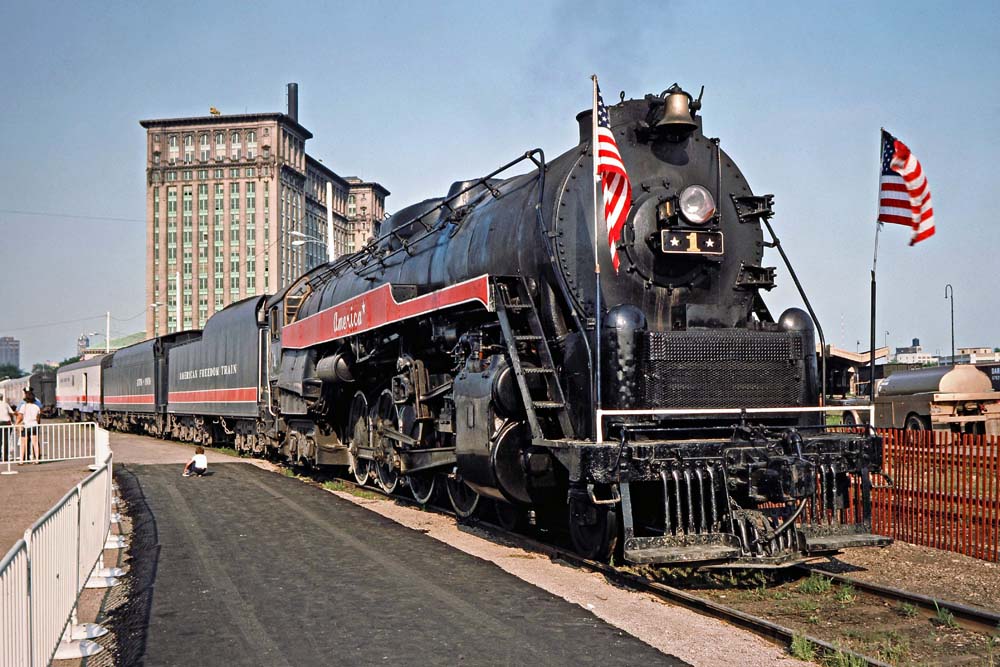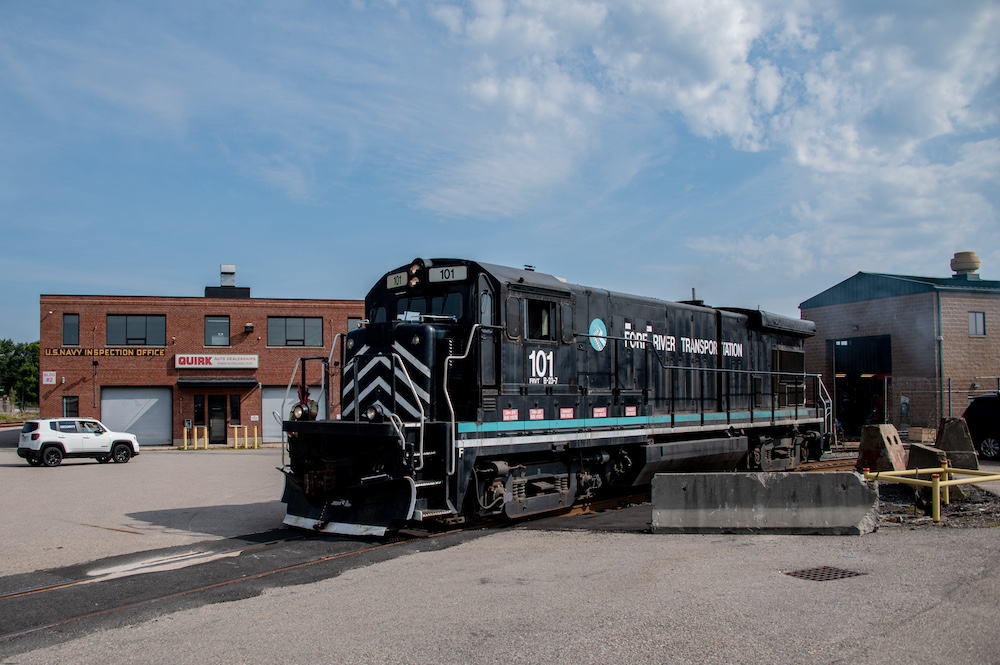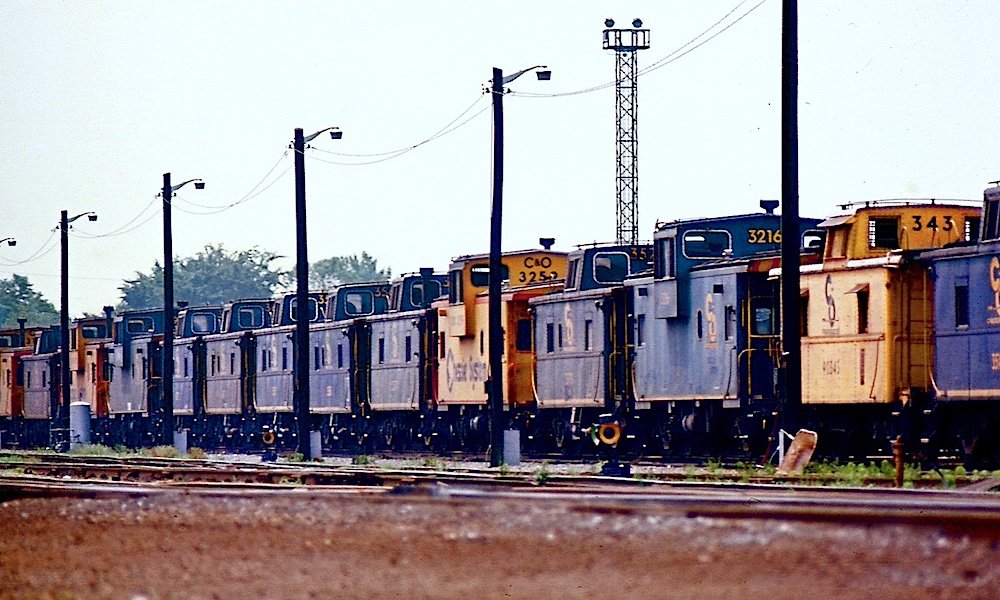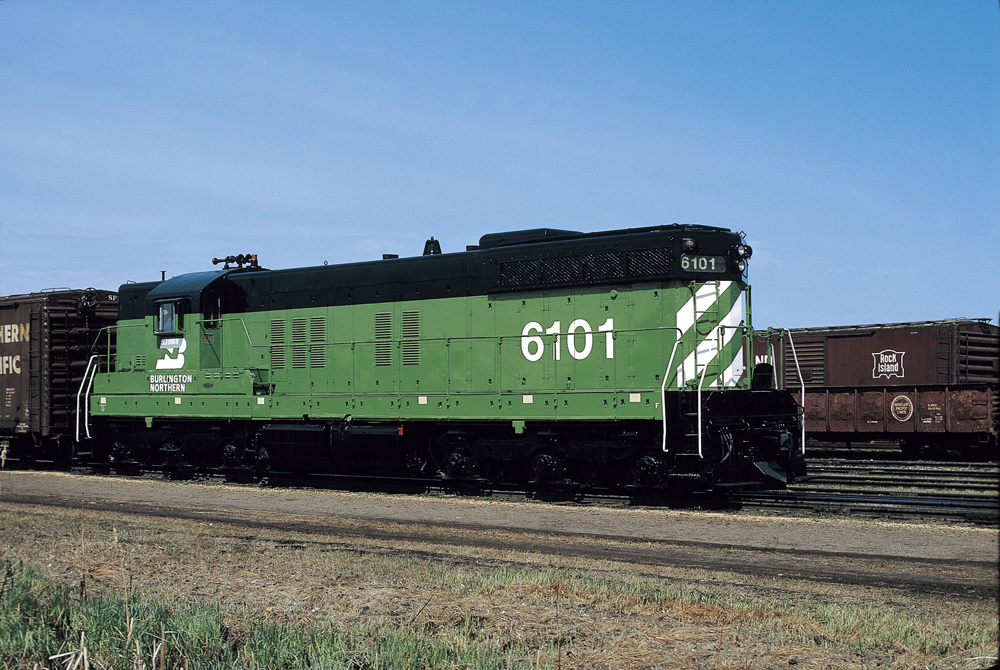Q I’ve read that when some railroads sent their steam locomotives in for a complete overhaul, they changed the main drivers to a disc type. Why would they do this?
— Alex Jamieson, Chatham, Ont.
A Changing to disc-type drivers was done on a case-by-case basis. The older style spoke drivers had a tendency to break or crack the spokes, especially on higher speed locomotives or in a derailment. As technology advanced during the 1930s, railroads found that the disc-style driver was much stronger and would hold up better under the high force. One example is the Soo Line 2719 at the Lake Superior Railroad Museum in Duluth, Minn. The Soo Line replaced only the main driver with a disc style. The main drivers are more prone to crack, this was likely due to the higher speeds, larger diameter wheels, and additional force of the piston. Or the locomotive might have been in a derailment. In addition to the added strength, the balance of the wheel was a big consideration on higher speed locomotives. Railroads balanced wheels by adding counter weight to the driver, generally by adding lead to pockets in the back side to the driving wheel. The disc-style driver made it much easier for a railroad to add or subtract weight.
— Steve Sandberg, chief operating officer, Friends of the 261
Q I recently took a day trip to the Susquehanna State Park in Maryland. While there, I noticed a rail line between the old mill and the river. Even though it definitely hasn’t been used in a very long time (it’s been turned into a footpath, although they didn’t remove the track), it looks to be in much better condition than the rail lines still in use. Could you figure out what company owned the line, and why it’s still in such good shape?
— Jeremy Smith, Baltimore
A The track you found was constructed to provide a route for heavy equipment and components to the huge Conowingo Dam. Stone & Webster Engineers of Boston, and the Arundel Corp. of Maryland built the Conowingo Dam between 1926 and 1928 for the Philadelphia Electric Co. At the time of construction, it was the second-largest hydroelectric dam in the United States. The Conowingo Dam is currently owned and operated by Susquehanna Electric Co., a subsidiary of Exelon Corp. The track originally connected to the Baltimore & Ohio Railroad (now CSX) near Harve de Grace, Md.
— Eric Lee, attorney and shortline operator
Q I have seen photos credited to John Krause for many years, yet have not encountered any information about the man. Could you provide me (and your other readers) with biographical information about this remarkable man?
— Harry Engel, Columbia, S.C.
A John Krause was born in 1929 in Long Island, where he lived and worked for his family’s electrical contracting business, Wilma Electric, until his death in 1989. As a child, he played with a Lionel toy train, and in his teens, he was the class photographer at Baldwin High School.
These two interests combined in the late 1940s when he began photographing the local Long Island Rail Road steam locomotives. Like other rail photographers, Krause foresaw the industry’s transition to diesel. He focused on documenting shortline operations, with particular affection for narrow gauge. In 1965, he published the first of 10 railroad photography books, “Rails Through Dixie.”
Co-author H. Reid described Krause as a “Speed Graphic photographer and publisher, a stellar 4 x 5 man who showed no fear of correcting his faults.”
Krause generally teamed with another railroad photographer (Donald Duke, Ed Crist, or Ross Grenard) for his books. Duke, moments before meeting Krause, first glimpsed Krause’s car, “a tan-colored Ford with New York license plates and a huge Baldwin Locomotive Works engine number plate mounted on the front.” Railroad photographer Bob Richardson told Duke, “You should see the gadget he has to mount to Speed Graphic cameras so he can take two shots at one time.”
— Lorie West, Milwaukee-based freelance writer
Q The April 2010 Official Railway Equipment Register lists BNSF freight cars still showing a lot of fallen flag reporting marks and Union Pacific freight cars with various acquired railroad reporting marks. Why do some freight cars still carry their original reporting marks almost 40 years after the merger that absorbed them, but the locomotives in the BNSF and UP fleets are painted or “patched” into the merged or acquiring railroad’s reporting marks relatively soon after the merger or acquisition?
— Mike Hull, Midlothian, Texas
A According to one of the Class I carriers, the answer lies simply with the size of the locomotive fleet, which is proportionally smaller than the car fleet. The Class Is can move locomotives through shops for re-stenciling much more quickly than the vastly larger railcar fleet. The locomotives are also much more visible in the public and shippers’ eyes and can promote the brand. So, while it may take years to fully repaint a locomotive, the railroads often make the effort to at least identify proper ownership by applying reporting marks as soon as possible.
— Eric Powell
Q Railroads post along the tracks the “W” sign telling engineers that a road crossing is ahead and to sound their horns. We have several silent crossings in which the engineer does not have to sound his horn but a speaker system protects the motorist at the crossing. How does the railroad indicate to the engineer that a silent crossing is ahead and not to blow the locomotive’s horn?
— Charles Horner, Lincoln, Neb.
A The Canadian National has three different types of signs to tell the engineer of a train approaching crossings in quiet zones not to sound the whistle. On the former Elgin, Joliet & Eastern, the signs that say “WQ” mean “whistle quiet.” Other territories have the usual whistle post with a “W” with a red circle and slash over the W. And, on the former Wisconsin Central in Mundelein, Ill., there are automatic warning horns installed at seven crossings. There, the posts have a “W” inside a “C,” meaning “conditional whistle.” When automatic horns are working correctly, a big “X” will be lit and flashing, informing the engineer he or she is relieved of whistling for the crossing ahead. The “condition” is that if the “X” is not lit and flashing, the engineer must whistle for the offending crossing. I’m sure other railroads use variations of these signs or similar ones.
— Ray Weart, Canadian National locomotive engineer
Q Did anybody besides Lionel ever build a 2-6-4 steam locomotive that wasn’t a tank engine? I know Canadian Pacific Railway had a fleet of 4-4-4s, but a 2-6-4?
— Fred Wright, Fremont, Calif.
A The only prototype 2-6-4 that I am aware of is the Adriatic locomotive. It was Austrian or, more accurately, Austro-Hungarian Kaiser und Könige Staatsbahn and later (after World War I, when the Austro-Hungarian Empire had been divided to its integral parts), Österreichische Bundesbahnen class 310.
This was a high-speed express locomotive designed by the famous Austrian locomotive designer Karl Gölsdorf. Ninety locomotives were built between 1911 and 1916, numbered 310.01-90, and they hauled only the most prestigious express trains. After the disintegration of the A-H Empire, the locomotives were divided among some of the successor states, and so the Austrian State Railways (BBÖ) kept 43 of them,
Nos. 310.05-90 (not in continuous numbering); Czechoslovakian State Railways got 35, Nos. 375.001–035; and Polish State Railways got 12, Nos. Pn12-1–12. SD retired them in 1950 and ÖBB in 1957. (Before World War II, Austrian Railroad’s official abbreviation was BBÖ because of a trade name dispute with the Swiss Önsingen Balsthal Bahn.)
Here is some technical data:
- Builders: Floridsdorf, Wiener Neustadt, Erste Böhmisch-Mährische Maschinenfabrik, Lokomotivfabrik der Staats-Eisenbahn-Gesellschaft, Breitfeld & Dan?k
- Build dates: 1911-1916
- Construction type: 4-cylinder compound, superheated
- Boiler pressure: 16 atmospheric pressure
- Length over buffers: 70.2 feet
- Height: 15.2 feet
- Weight: 95 tons locomotive, 152.5 tons with tender
- Diameter of the drivers: 7 feet
- Maximum speed: 62 mph
Two class 310 locomotives have been preserved. One, No. 310.023, belongs to the Technical Museum Vienna and is stationed in operating condition at the Railroad Museum Strasshof, while another preserved (but not operational) locomotive, 310.015, is in the National Technical Museum in Prague, Czech Republic.
— Miško Kranjec, photojournalist and rail enthusiast in Ljubljana, Slovenia













